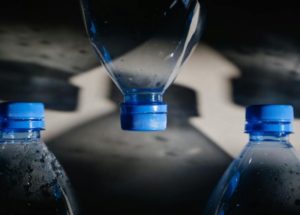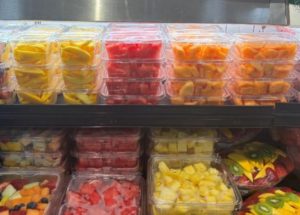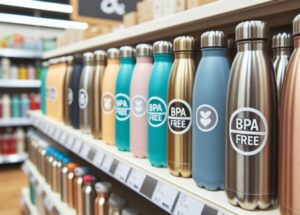Jun 20, 2025
Do PET Post-Consumer Recycled Materials Contain PFAS? What Our Testing Revealed
At a Glance Post-consumer recycled content can be PFAS‑free — lab tests on PET with 10–100% PCR showed no detectable PFAS, easing health concerns. PFAS fears may be overstated, as contamination didn’t appear despite theoretical worries. Ongoing testing and supplier checks are key to maintaining safety as recycling processes evolve. Sustainable + safe = possible […]
Read More +
Jun 18, 2025
The Truth About Plastic Food Packaging Sustainability
At a Glance Plastic food packaging sustainability hinges on life-cycle impact: efficient production offsets heavier alternatives like glass or metal. Plastic outperforms heavier materials in CO₂e when accounting for weight, transport, and food waste prevention. Microplastics aren’t a major source from packaging, unlike textiles or paints. Beyond recycling: strategies like eco-design, circular systems, producer responsibility, […]
Read More +
Jun 16, 2025
Molded Fiber Food Containers: Promise or Problem?
At a Glance Molded fiber food containers offer compostable benefits, but often need barrier coatings that may include PFAS or plastic. They lack clarity and durability, making them better for quick-turn items than long shelf-life products. Production is slower and more expensive than plastic due to complex forming and drying steps. Innovation is underway, but […]
Read More +
Jun 13, 2025
Do You Know How Quality Plastic Packaging Reduces Food Waste?
At a Glance Quality packaging fights food waste in America by extending freshness and preventing spoilage through barrier protection and smart design. Sealing, portion control, and durability cut down on damage and over-consumption. Lightweight plastic reduces transport losses, lowering breakage and carbon impact versus heavy packaging. Investing in packaging pays off, balancing cost and sustainability […]
Read More +
Jun 11, 2025
The Reality of Post-Consumer Recycled Materials in Plastic Packaging
At a Glance Post-consumer recycled materials vary in quality, depending on source, sorting, and contamination — real-world PCR isn’t always consistent. PCR adds color/odor challenges, meaning branding, clarity, and food safety must be carefully managed. Regulatory compliance is non-negotiable, requiring PCR materials to meet FDA/food-contact standards before use. Transparent testing and supplier partnerships are essential […]
Read More +
Jun 09, 2025
Trust at First Sight: The Strategic Value of Consumer Confidence Through Tamper-Protected Food Packaging
At a Glance Tamper-protected food packaging builds consumer trust, signaling safety and care from shelf to home. Clear tamper evidence deters theft and tampering, keeping products intact and brands protected. Implementation costs and design impact usability, so balance security with consumer friendliness. Success hinges on seamless integration — educate consumers, streamline production, and ensure reliable […]
Read More +
Jun 06, 2025
Plastic Bans 101: What You Need to Know as a Food Industry Professional
At a Glance Plastic bans target specific single-use items, not all packaging — common hits include bags, foam containers, straws, utensils, and small water bottles. Rules vary widely, with a mix of city and state regulations, plus some states blocking local bans. Business impact includes packaging changes, cost shifts, and tracking compliance across regions. Trends […]
Read More +
Jun 04, 2025
BPA Explained: Should You Be Concerned for Your Food Business?
At a Glance BPA-free packaging is a top priority, as consumers and regulators demand materials without bisphenol A due to health concerns. Alternative materials like PET, HDPE, and polypropylene avoid BPA but should still be vetted for migration and food contact safety. Supplier certifications and testing ensure compliance and prevent unexpected chemical exposures. Transparent labeling […]
Read More +
Jun 02, 2025
The Way Nitrogen Affects Food Freshness May Surprise You
At a Glance Nitrogen flushing extends freshness by replacing oxygen in packages — slowing browning in produce and oxidation in meats and cheeses. Fresh produce gets a head start: reducing oxygen to 5–8% right away helps maintain color and quality. High-barrier packaging and MAP work for proteins: aiming for near-zero oxygen to preserve flavor and […]
Read More +
May 30, 2025
How Controlling Fruit Purge Can Save Your Fresh-Cut Products Today
At a Glance Fruit purge control is essential — managing expelled juices prevents soggy packaging, microbial growth, and product damage. Drainage systems (pads, trays, mesh) wick away excess liquid, keeping fruit fresh and appealing. Modified atmosphere packaging (MAP) reduces respiration and purge by adjusting gas levels around the fruit. Temperature control and rapid sealing are […]
Read More +










